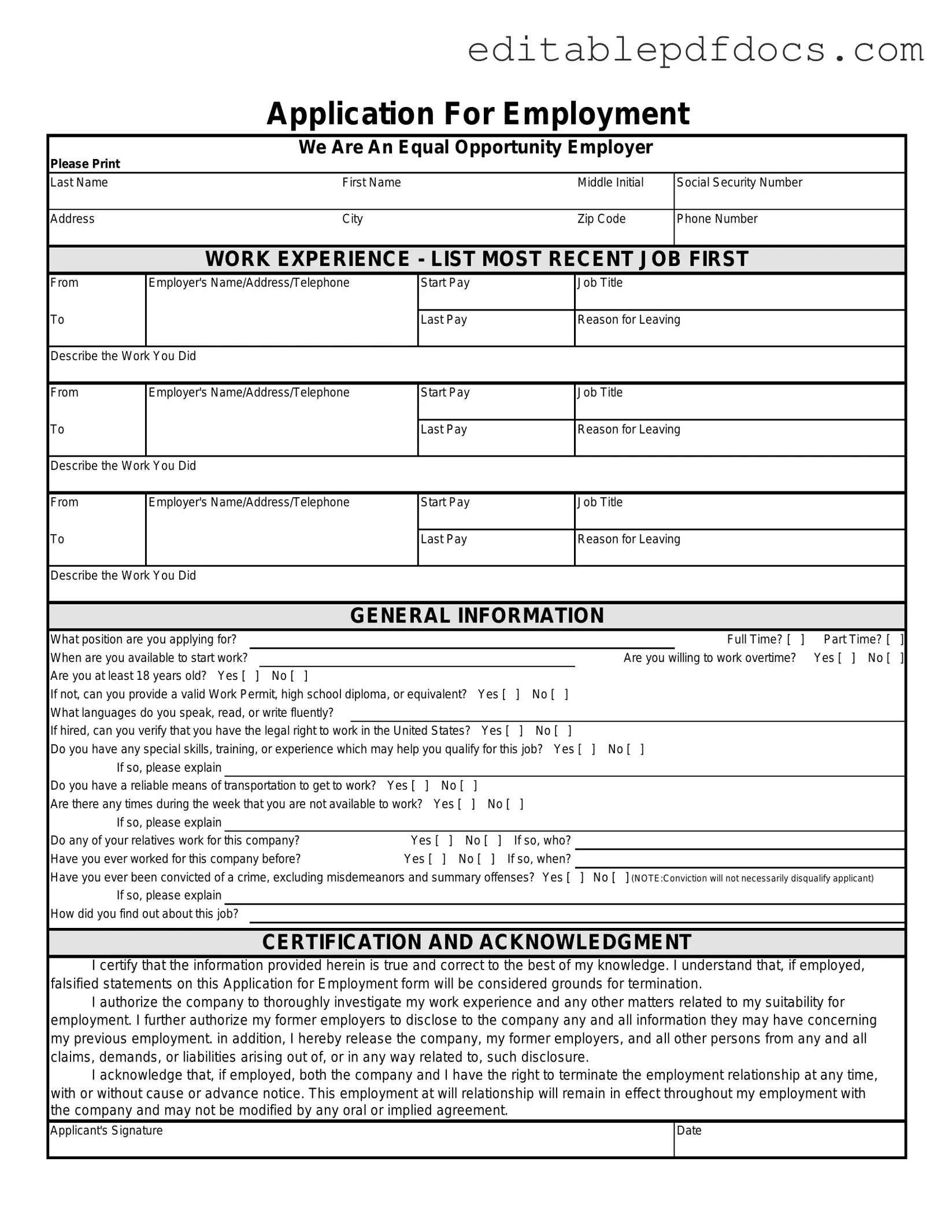Fill a Valid Spanish Application Employment Template
The Spanish Application Employment Form is a document used by employers to gather essential information from job applicants who are fluent in Spanish. This form includes sections for personal details, work experience, and general information relevant to the employment application process. Completing this form accurately is crucial for candidates seeking job opportunities.
To start your application, please fill out the form by clicking the button below.
Open Editor Now
